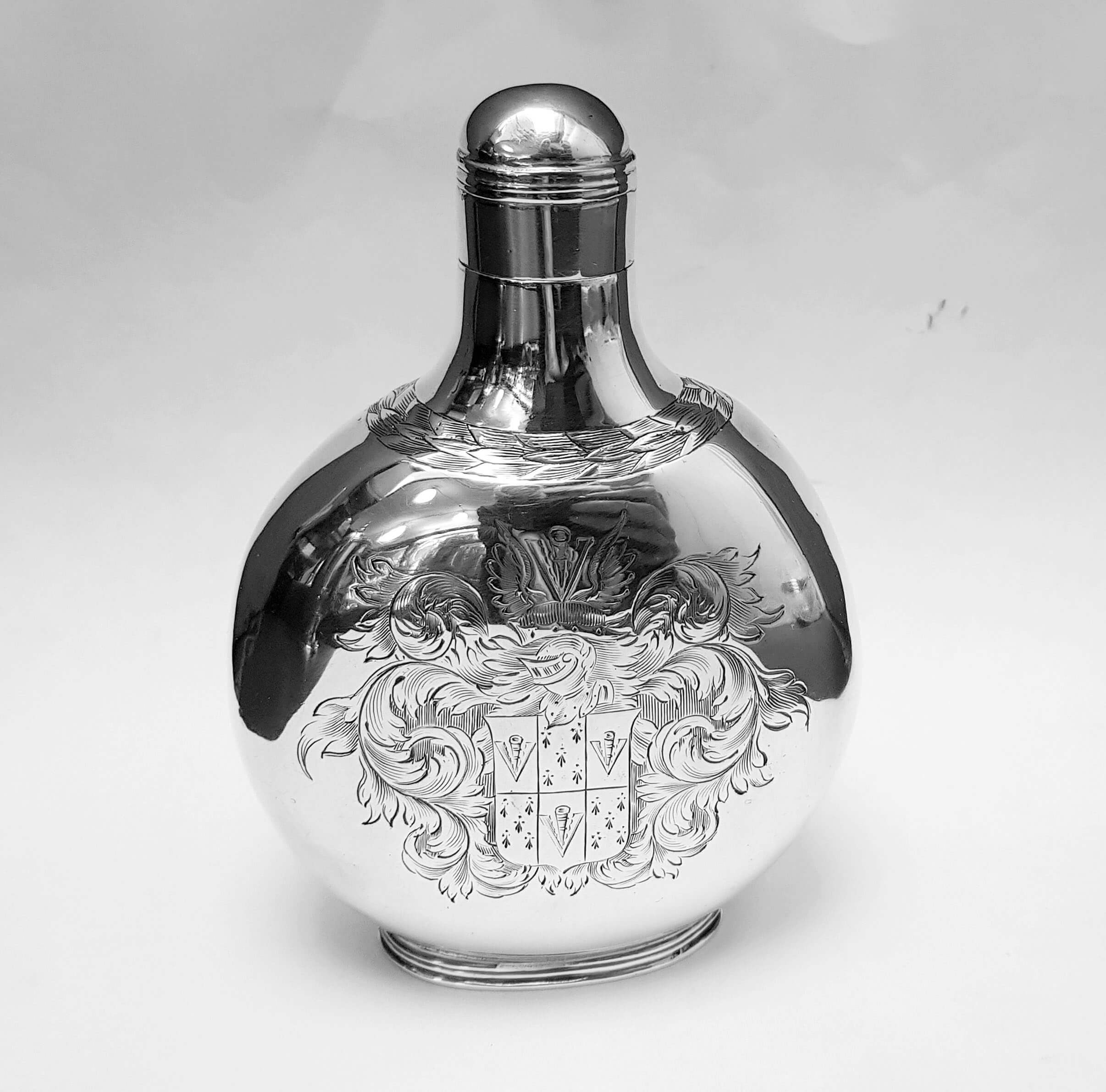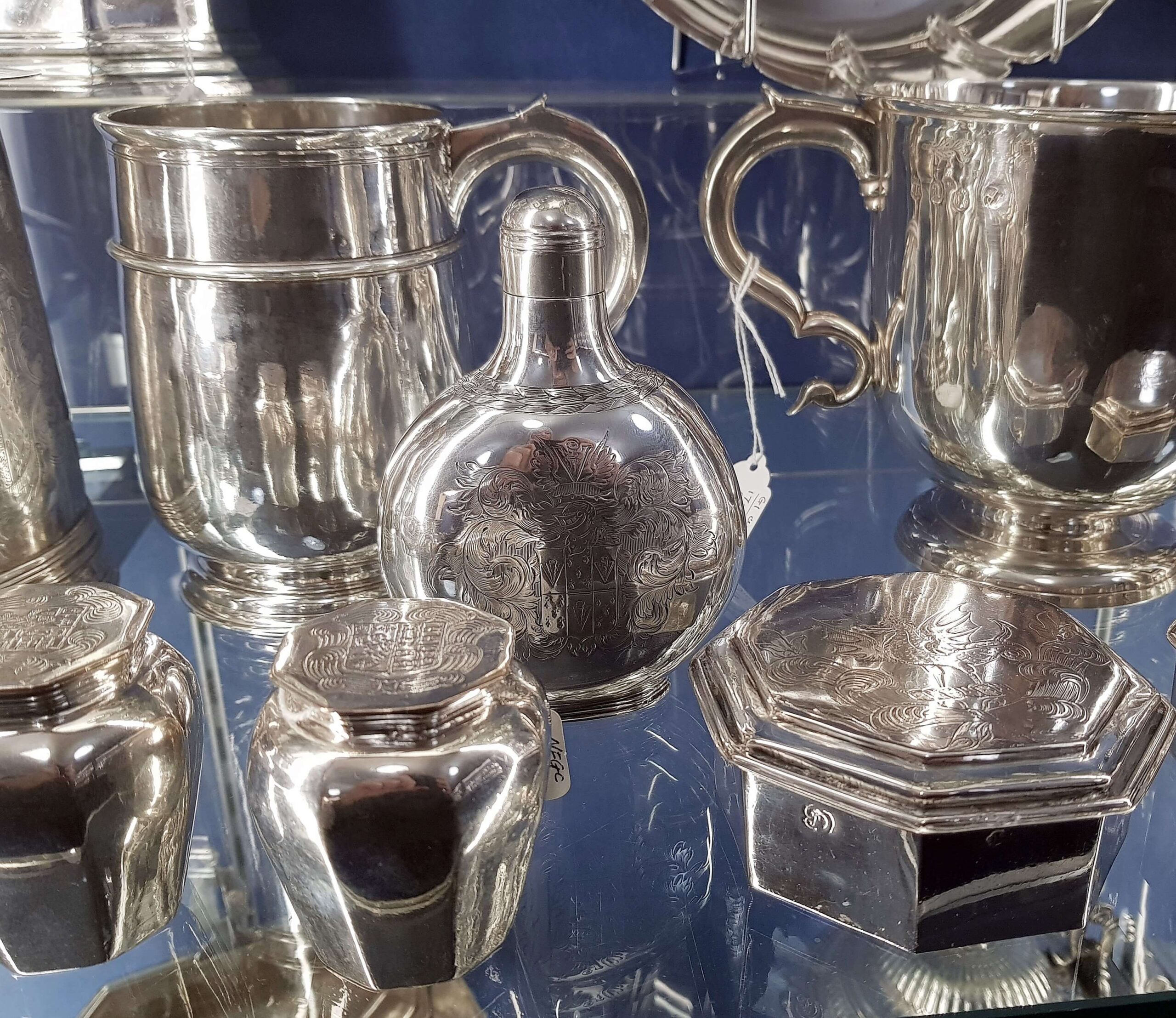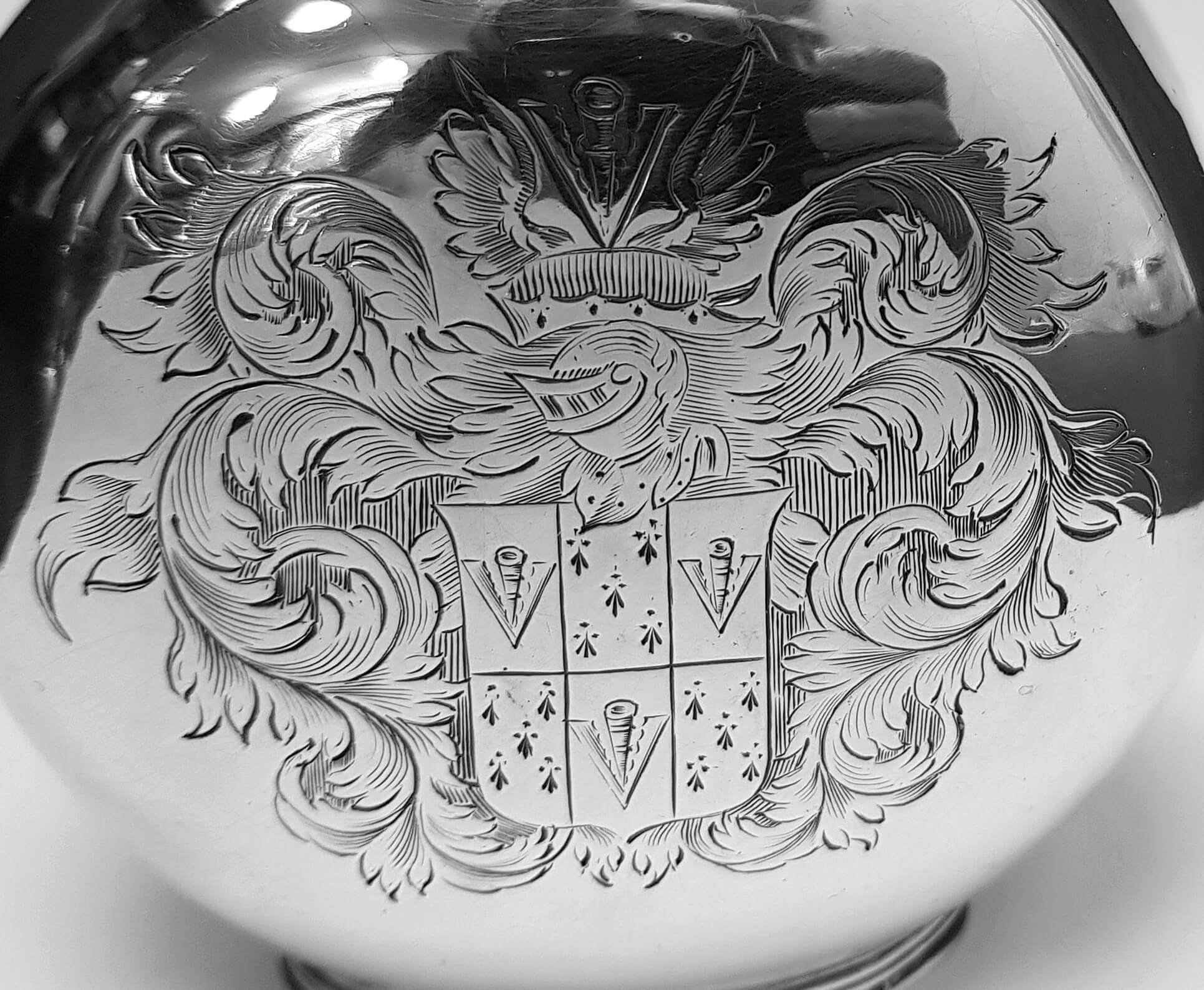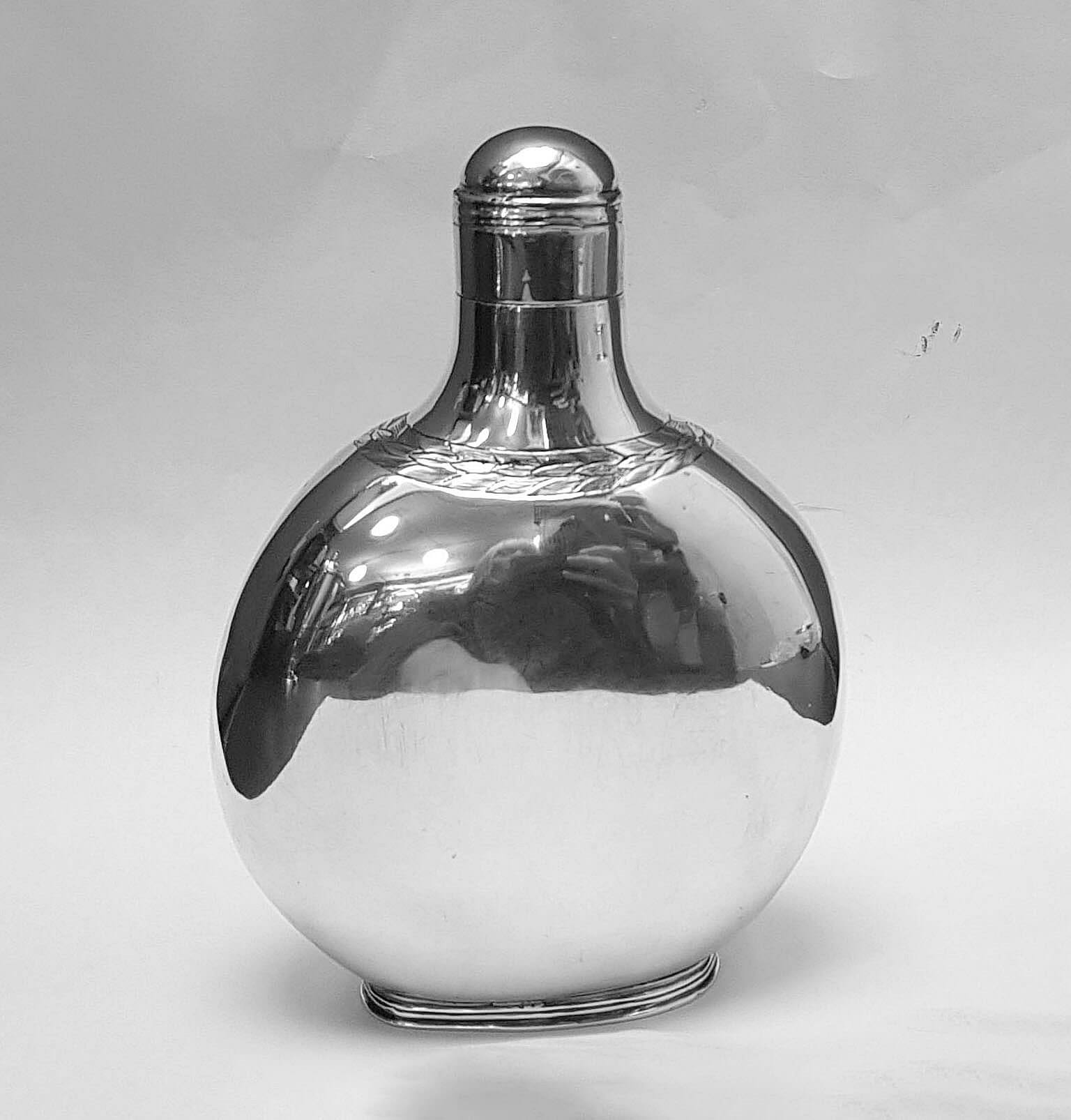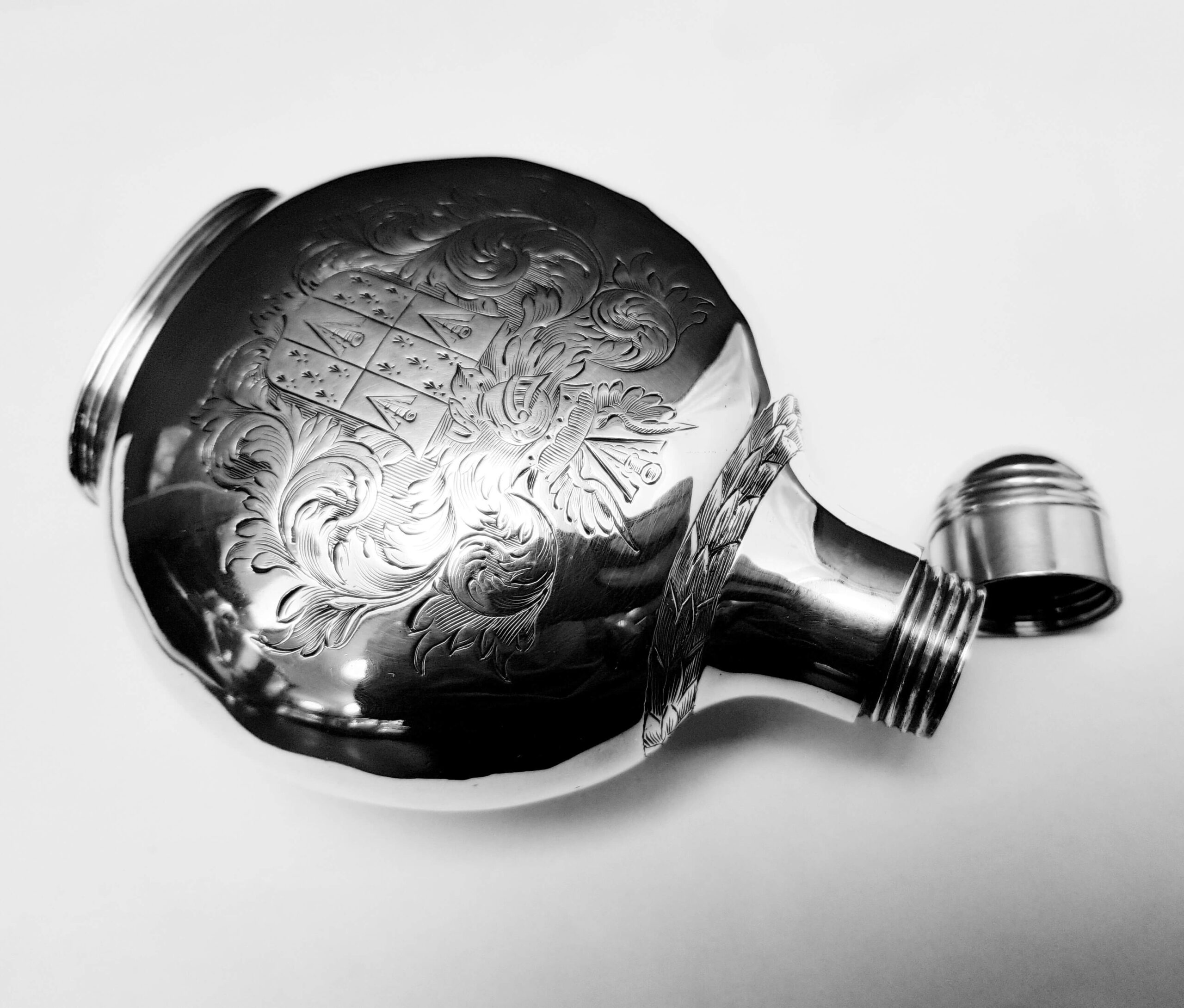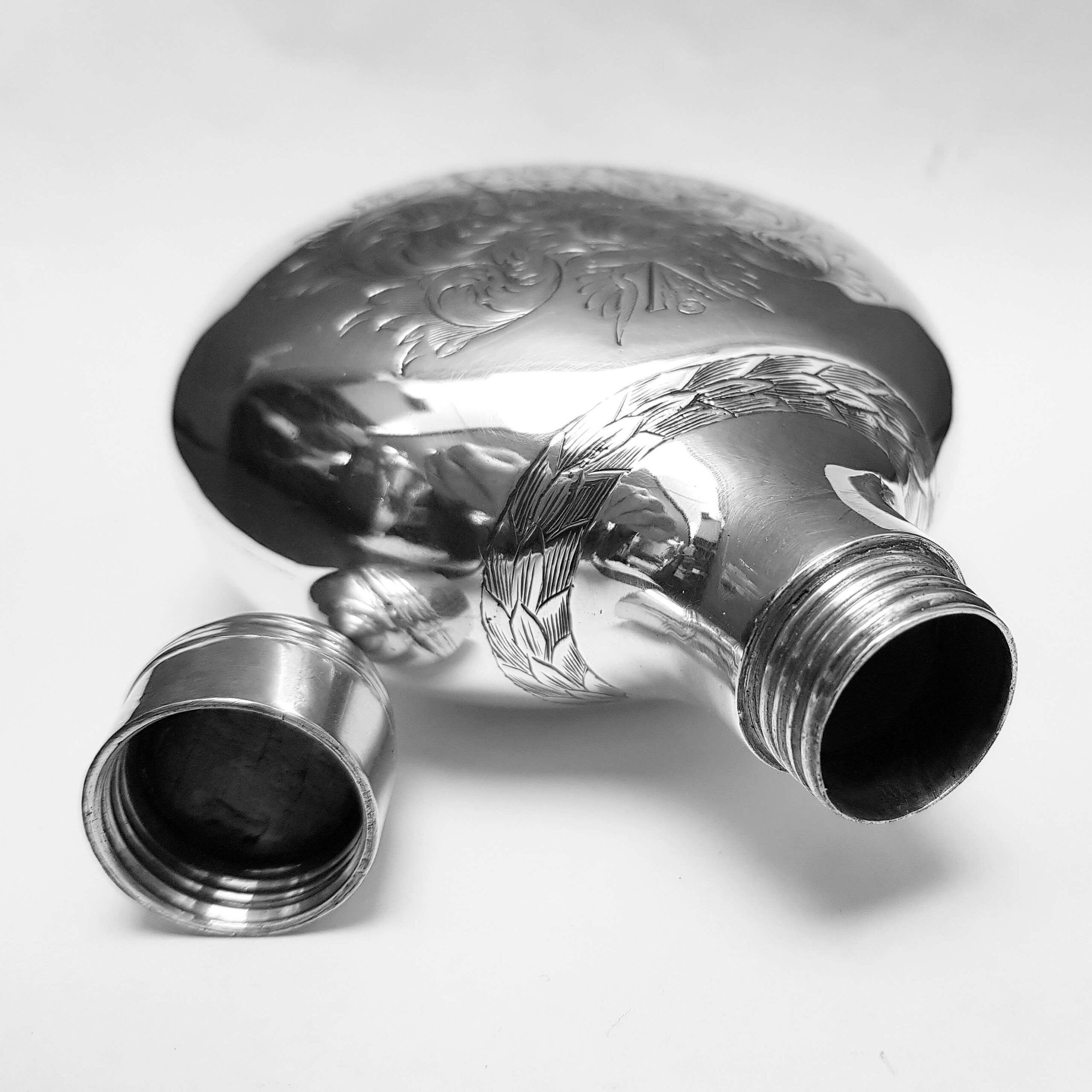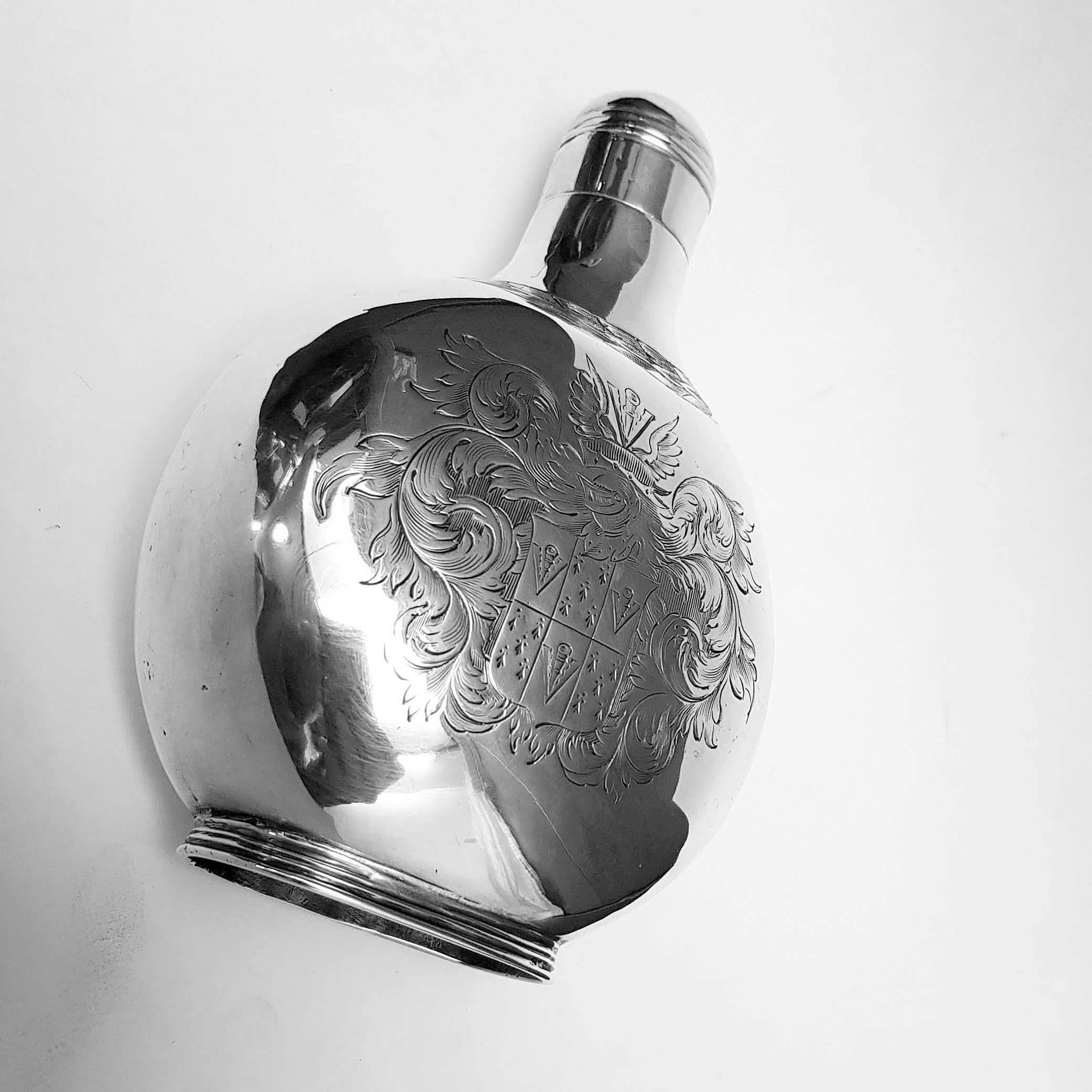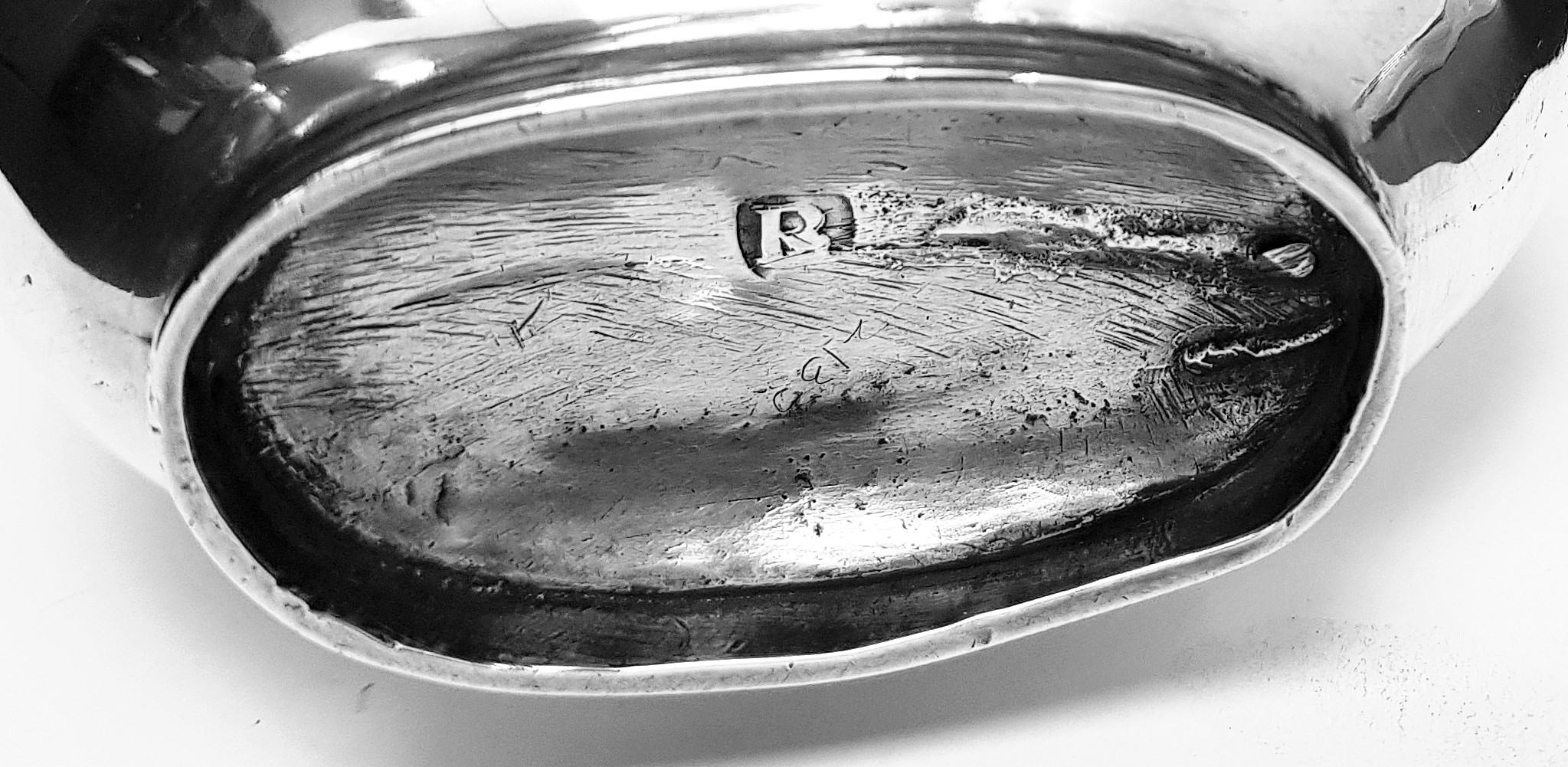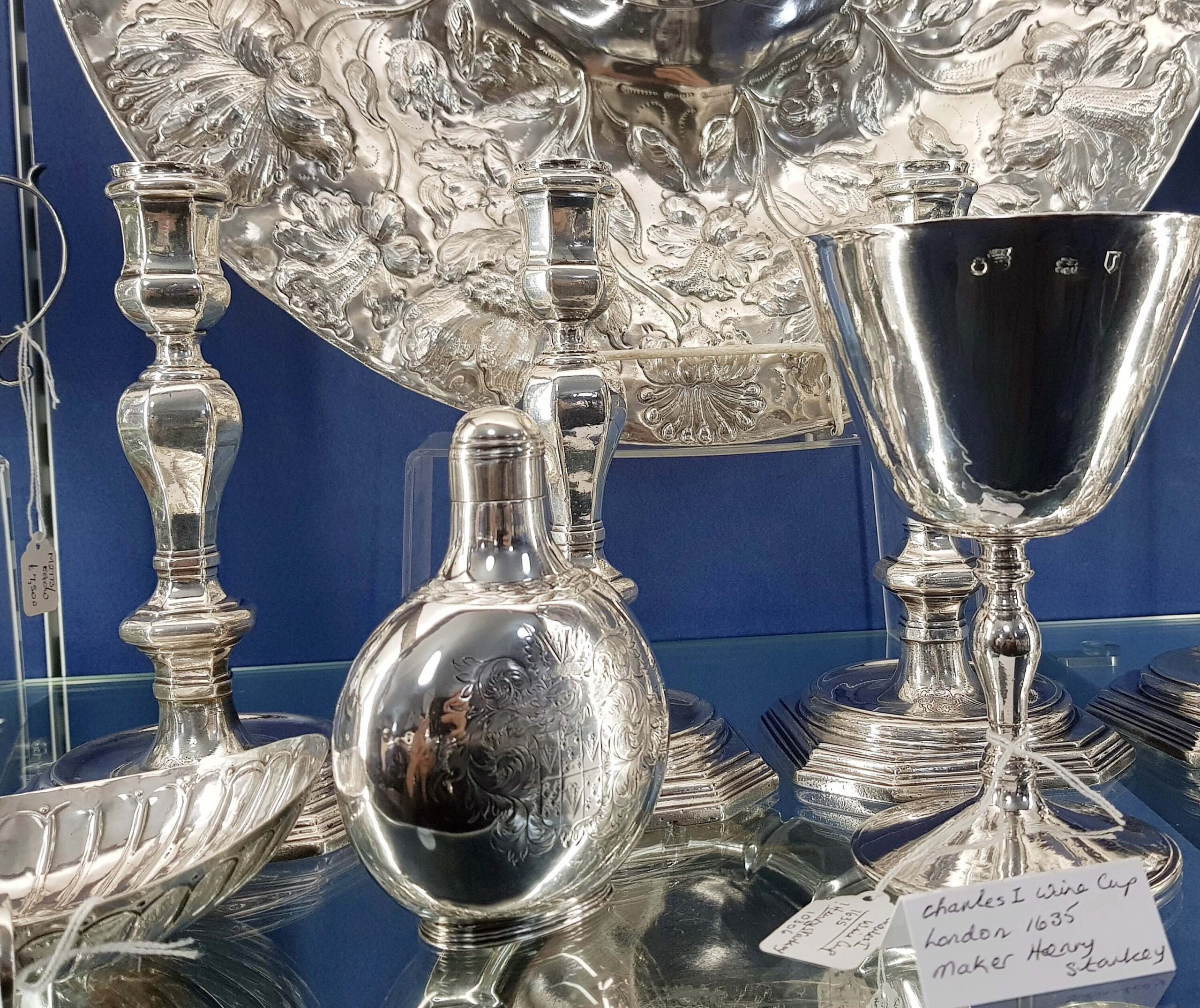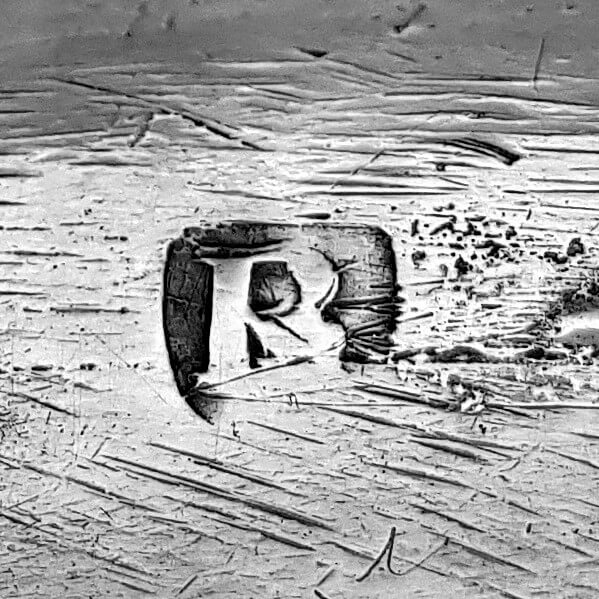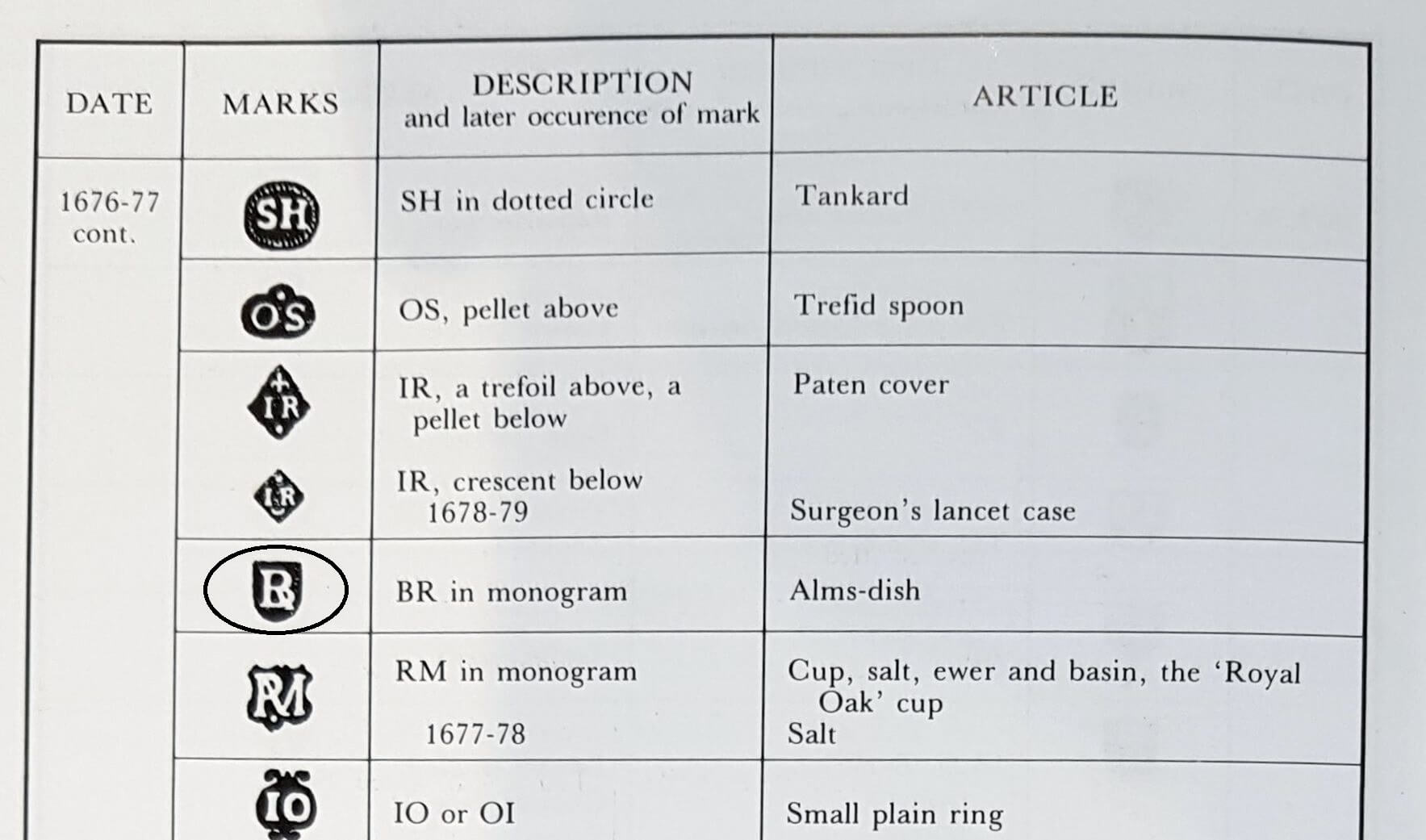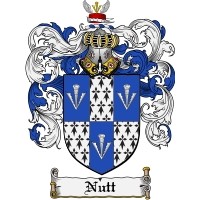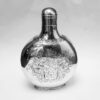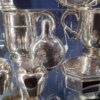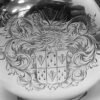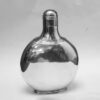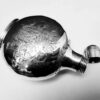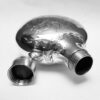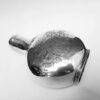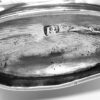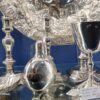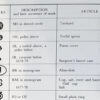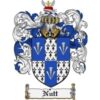William and Mary Antique Silver Pilgrim Flask
SOLD
Stock: 10348
Date: Circa 1690
Country: England
A rare early English silver drinks flask of small size in the form of a medieval pilgrim flask. Plain form...
Description
Description
A rare early English silver drinks flask of small size in the form of a medieval pilgrim flask. Plain form and heavy gauge silver with a screw-on top. To the front there is a large decorative cartouche hand engraved with an armorial for the Nutt family.
Weight 132g, 4.2 troy oz.
Height 12cm. Width 8cm.
Maker “BR conjoined”.
London circa 1690.
Sterling silver.
Marks. Stamped with the maker’s mark only “BR conjoined” – see Jackson’s “Silver & Gold Marks” page 134. It’s quite normal for small silver articles of this period to be unmarked.
Arms. These are the arms of the Nutt family. John Nutt DD was Rector of both Berwick and Bexhill, had been a Chaplain to Charles I and was a staunch Royalist. He lived at Mayes House surrounded by a comfortable estate at Selmeston in Sussex. Died 1653.
His eldest son Sir Thomas Nutt died 1675, but he had two daughters, co-heiresses:
— Katherine, who married Anthony Bramston in 1683, died 1708.
— Philadelphia, who married Sir Thomas Dyke of Horeham, died 1720.
Sir Thomas also had at least one much younger brother.
Literature. Early Medieval pilgrimage ampullae or small flasks were designed to hold holy oil brought back from the Holy Land. The oil was taken from the lamps which burn in front of important pilgrimage shrines and was believed to be able to heal the sick. The pilgrim flask usually has a flat body, circular or pear shaped, with a short neck and spreading foot. It often has a chain for suspension around the neck or to be hung on the bedpost for protection from demons at night.
Maker’s Marks. There are no precise records of silver makers’ marks prior to 1682. All records were destroyed in the fire at Goldsmiths Hall in 1681 when the Assay Office and apartments of the Assayer and Clerk in the south west wing of the building were burned down. Sometimes the details of makers can be discovered from old records such as the inventories of noble houses and other institutions. The first surviving record at Goldsmiths Hall is the 1682 copper plate made to start the recording process again. A recent study by Dr David Mitchell, supported by Goldsmiths Hall, resulted in the publication of his 2017 “Silversmiths in Elizabethan and Stuart London” which identifies some of the previously unknown makers marks and assigns marks struck on existing plate to individuals (attributions for 540 separate marks).
Condition
This lovely antique silver flask is in very good condition. Good gauge silver. Fine patina. The hand engravings are still crisp. Shows moderate signs of wear commensurate with age.
Maker Information
No maker assigned
Our Guarantee
Customer satisfaction is our primary concern
All silverware on our website is checked thoroughly prior to offering it for sale and every product listing contains a condition report and details of the silver hallmarks.
All items offered on our website include:
- Free Shipping Worldwide
- Tracked and Insured
- 14 day no quibble money back guarantee
- We are accredited members of LAPADA and conform to their strict professional standards
- We dispatch 1-3 days after receiving cleared payments
More detailed information about deliveries, returns and how to pay is available in the Help section at the bottom of this page.
